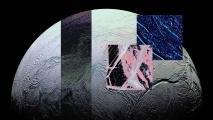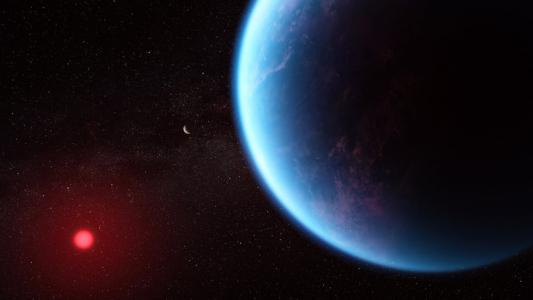T-Minus Weekly: NASA’s first asteroid sample, Stoke’s big hop, and more
This is T-Minus, where we count down the biggest developments in space, from new rocket launches to discoveries that advance our understanding of the universe and our place in it. Humanity is reaching new heights in space exploration. Make sure you’re part of the journey by subscribing here.


Stoke Space’s rocket hop
For decades, every mission to space required the sacrifice of a rocket, and because rockets are expensive, space was out of reach for anyone who didn’t have deep pockets.
The introduction of reusable rockets slashed launch costs, making space more accessible than ever before, but those systems still aren’t entirely reusable — only the lower stage is recovered while the upper stage burns up in Earth’s atmosphere.
Washington-based startup Stoke Space is trying to be the first group to develop a fully reusable rocket — and make the rocket’s two stages refurbishable in just 24 hours.
On September 17, Stoke hit a major milestone, flying its upper stage for the first time. The 15-second flight was just a tiny hop 30 feet into the air and slightly downfield, but it demonstrated that the startup’s unique rocket engine design works as hoped.
“[T]his test program was all about: Does this idea work and can we control the vehicle using some of these new and different techniques?” Andy Lapsa, Stoke Space’s co-founder and CEO, told TechCrunch. “All the questions that we had to ask … those are all resounding yeses.”


Curiosity’s successful trek
NASA’s Curiosity rover landed on Mars in 2012, and almost all of its time on the Red Planet since has been spent slowly ascending Mount Sharp, a 3-mile-tall mountain in Gale Crater.
NASA believes that about three billion years ago, during one of Mars’ last wet periods, boulders, mud, and other debris flowed down Mount Sharp, forming a feature now known as the Gediz Vallis Ridge.
Because this ridge could contain evidence of ancient water on Mars and provide an up-close look at the types of rock found farther up Mount Sharp, NASA has tried three times in the past three years to send Curiosity to investigate it — but all three attempts have ended in failure. The path has always been too steep and too rife with sharp “gator-back” rocks.
Fourth time’s the charm, though, as NASA announced on September 18 that Curiosity had finally managed to reach the Gediz Vallis Ridge on August 14. It then spent 11 days in the area, taking photos that could reshape our understanding of Mars’ history.
“After three years, we finally found a spot where Mars allowed Curiosity to safely access the steep ridge,” said Ashwin Vasavada, Curiosity’s project scientist at NASA’s Jet Propulsion Laboratory. “It’s a thrill to be able to reach out and touch rocks that were transported from places high up on Mount Sharp that we’ll never be able to visit with Curiosity.”


NASA’s first asteroid sample
Our solar system contains millions of asteroids — rocky bodies left over after the formation of the sun, planets, and moons about 4.6 billion years ago — and in 2016, NASA launched the OSIRIS-REx mission to retrieve a sample from one named “Bennu.”
NASA had never collected an asteroid sample before, but it had several reasons for wanting a bit of Bennu, one being that it’s a “potentially hazardous asteroid.” That means there’s a chance its orbit might one day put it on a collision course with Earth, and a sample could provide insights that might help us deflect or destroy the space rock if that day comes.
Bennu is also an estimated 4.5 billion years old, meaning it formed right around the same time the solar system started coming together. A sample of the asteroid could then be like a time capsule, offering a glimpse into the earliest days of our solar system.
OSIRIS-REx successfully collected its sample from Bennu in 2020, and more than seven years and 4 billion miles after lifting off, it sent a capsule containing nearly 9 ounces of asteroid flying into Earth’s atmosphere on September 24.
As planned, the capsule landed in the Utah desert about four hours later, and NASA has already begun the process of extracting the asteroid sample from it so that the bits of space rock and dust can be studied by scientists across the globe.
“The whole team had butterflies today, but that’s the focused anticipation of a critical event by a well-prepared team,” said Rich Burns, project manager for OSIRIS-REx at Goddard Space Flight Center. “For us, this was the World Series, ninth inning, bases-loaded moment, and this team knocked it out of the park.”
We’d love to hear from you! If you have a comment about this article or if you have a tip for a future Freethink story, please email us at [email protected].




